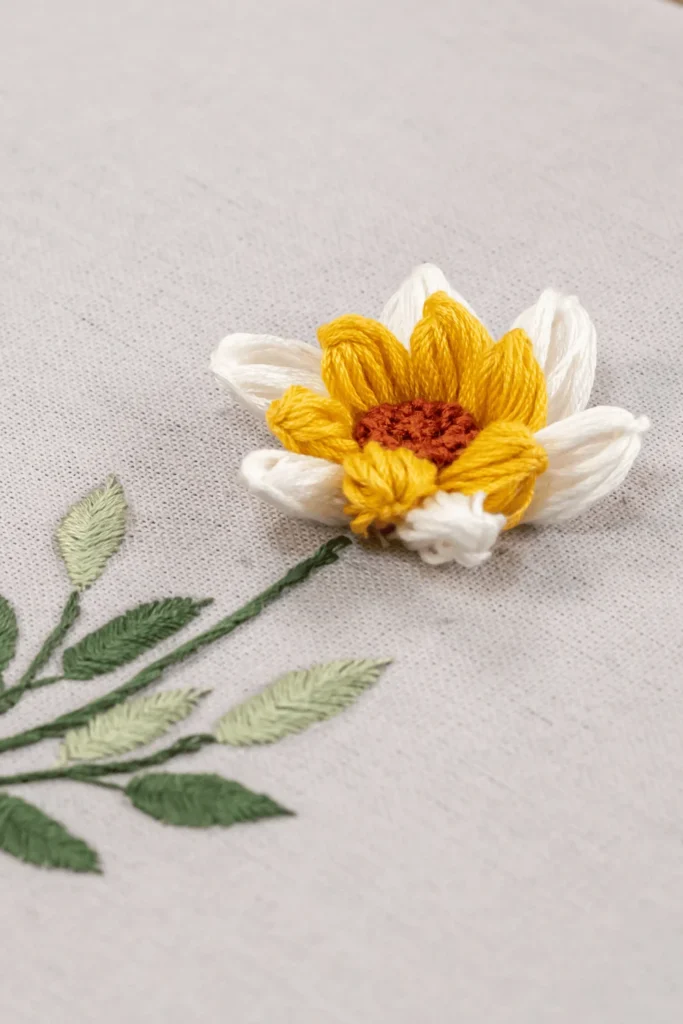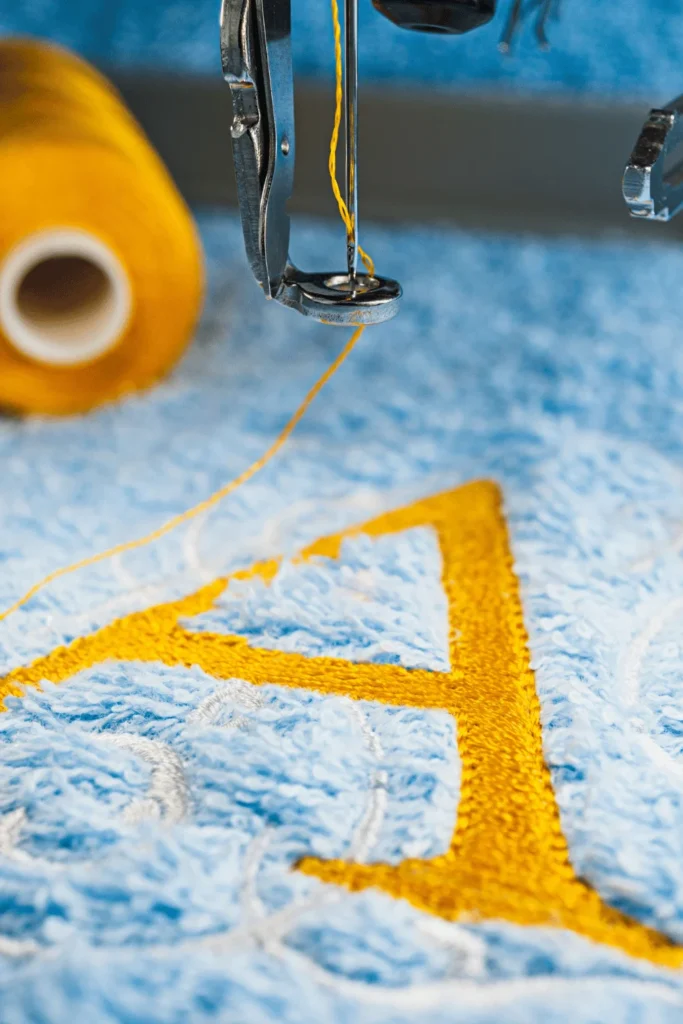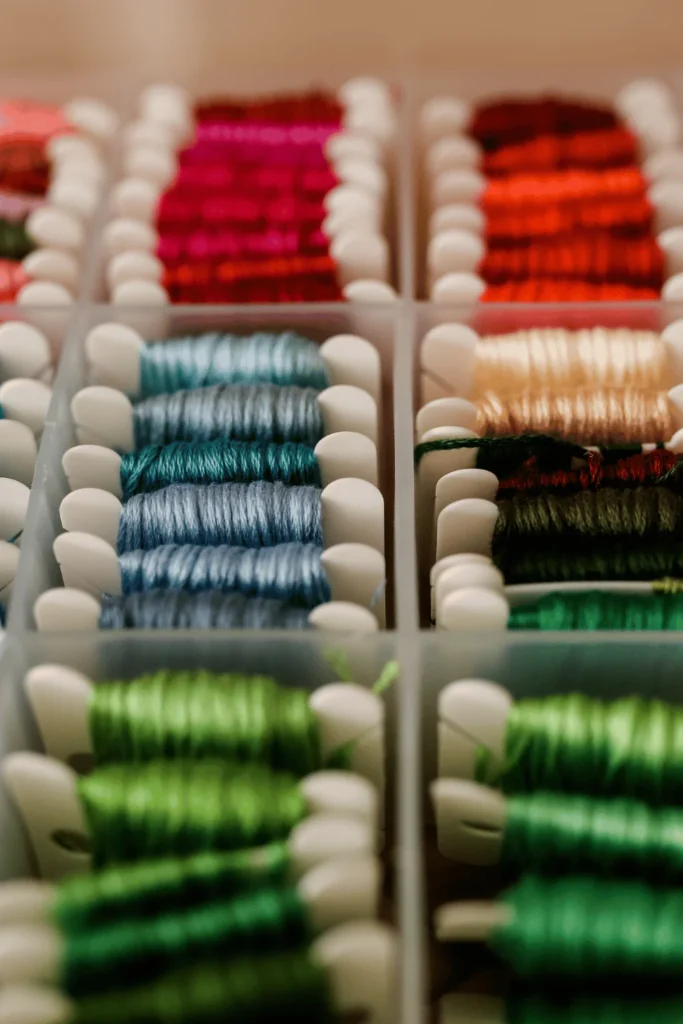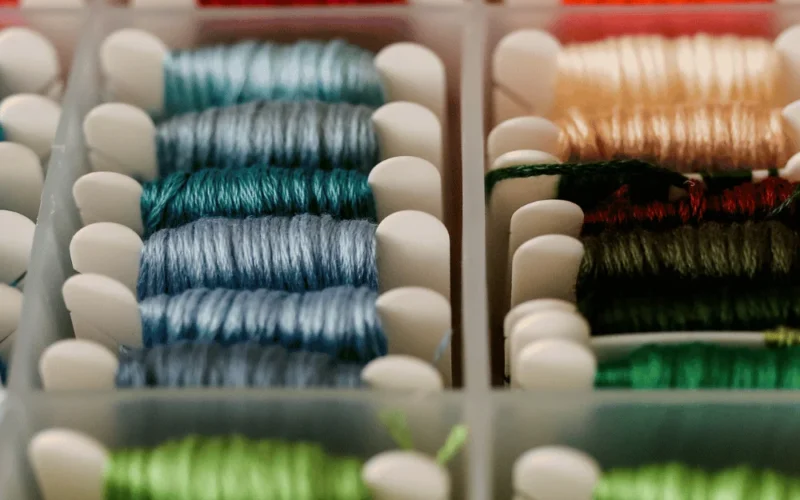Embroidery, quilting, and fabric crafts often rely on our trusty steed, water-soluble stabilizers!
We know and love our stabilizers for dissolving in water and leaving behind a beautifully finished project. But what happens when the stitching is done, and it’s time to remove the stabilizer? Let’s learn how to remove water soluble stabilizer to ensure your crafts stay in top-notch condition.

What is Water-Soluble Stabilizer?
Water-soluble stabilizer is a temporary support for your fabric during the stitching process. It dissolves completely in water, leaving no trace behind.
It’s used to support the fabric during stitching, preventing puckering or distortion, and provides a clean, stable surface for intricate embroidery designs, ensuring they come out crisp and clear. It’s also incredibly versatile and can be used with anything from freestanding lace, patches, or appliqué.
Why Proper Stabilizer Removal Matters
Properly knowing how to remove water-soluble embroidery stabilizer is crucial for two big reasons:
- Longevity. Leaving stabilizer residue in can lead to stiffness or discoloration over time, affecting the look and feel of your creation.
- Appearance. Thoroughly removing water-soluble stabilizers can ensure that your hard work shines through, without any cloudy or sticky patches left behind.
In fact, you’ll need to remove water-soluble stabilizer whenever it’s used in your project, including for embroidery, quilting, and any other fabric crafts where the stabilizer is part of the process.
How to Remove Water-Soluble Stabilizer
Once your beautiful embroidery project or craft is complete, you’ll need to remove your stabilizer residue so your creation can feel high-quality and stay long-lasting. Here are a few different methods both hobby crafters and pros swear by!
Method 1: Rinse in Water
Fill a bowl with lukewarm water and place your embroidered piece in it. Ensure the water covers the entire design. Then, gently massage the fabric with your fingers to help dissolve the stabilizer faster.
Continue rinsing the fabric until the water runs clear, and once you’re finished, lay the fabric flat on a clean towel to air dry. (Avoid hanging it to dry, as it can distort the fabric.)
Method 2: Machine Wash
Place your finished piece in a mesh laundry bag and wash it in cold water on a gentle cycle. Avoid using harsh detergents or bleach, as they can damage the fabric.
After washing, air dry the fabric flat or tumble dry on low heat to help maintain the shape and quality of the embroidery.
Method 3: Use a Wet Cloth
Dampen a clean cloth with lukewarm water and gently dab the damp cloth on the stabilizer until it begins to dissolve. Repeat as necessary, dabbing with a clean area of the cloth until all the stabilizer is removed. Let your fabric air dry completely.

Method 4: Iron
Lay a damp cloth over the stabilizer, and gently and continuously press the cloth with a warm iron. Check the fabric often to avoid overheating it, and repeat as necessary until the stabilizer is dissolved.
Method 5: Using a Water-Soluble Stabilizer Remover
Read and follow the manufacturer’s instructions for the specific remover. You’ll likely be instructed to use a brush or spray bottle to apply the remover to the stabilizer, allow the remover to sit for the recommended time, and thoroughly rinse the fabric with water to remove the remover, then air dry.
What to Keep in Mind When Removing Water-Soluble Stabilizers
Of course, the biggest concern you might have with properly removing your water-soluble stabilizer is to avoid damaging the fabric or the embroidery itself.

Now that you know how to remove water-soluble stabilizers, keep these in mind:
- Gently handling your piece, especially avoiding stretching, pulling, or distorting the stitches.
- Using lukewarm water when rinsing or soaking the fabric to remove the stabilizer, use lukewarm water. Hot water can cause the stabilizer to dissolve too quickly and unevenly.
- Avoid harsh chemicals or bleach, as they can damage the fabric and the embroidery. Instead, stick to just mind detergents or soaps when washing the fabric to remove the stabilizer.
- Have a little patience, as rushing the process can lead to incomplete removal or damage to the fabric.
- Test first! Before using any method to remove the stabilizer, test it on a small, inconspicuous area of the fabric to ensure that it does not cause any damage or discoloration.
- Air dry flat. After removing your stabilizer, air dry the fabric flat to prevent distortion. Avoid hanging the fabric to dry, as this can stretch or misshape the embroidery.
- Always follow the manufacturer’s instructions. Simple as that!
Frequently Asked Questions
How to remove water soluble stabilizer?
To remote water-soluble stabilizer, soak the embroidery in lukewarm water, massage the fabric, and rinse it thoroughly until the water runs clear. Make sure to air dry flat to prevent distortion.
What’s the best way to remove water soluble stabilizer?
The best way to remove water-soluble stabilizers depends on the fabric and the embroidery project. A common method is the soaking method we mentioned above, using lukewarm water and gently massaging the fabric to dissolve the stabilizer, rinsing thoroughly, and air-drying flat.
Can I use water-soluble stabilizers for things other than embroidery projects?
Yes, water-soluble stabilizers can be used in fabric manipulation, appliqué, fabric printing, and as a temporary fabric adhesive!
Can water-soluble stabilizers be used with machine embroidery?
Yes, water-soluble stabilizers can be used with both hand and machine embroidery. They’re particularly useful for freestanding lace designs and designs that require a clean finish on both sides of the fabric.
Can water-soluble stabilizers be reused?
No, water-soluble stabilizers are designed for single use only. Once they’ve been dissolved in water, they can’t be reused.
Learn More About Crafting From Ricoma!
Now that you know how to remove water-soluble stabilizer, enhance your crafting projects even more with our embroidery and sewing machines to build and perfect your crafting business right at home!
